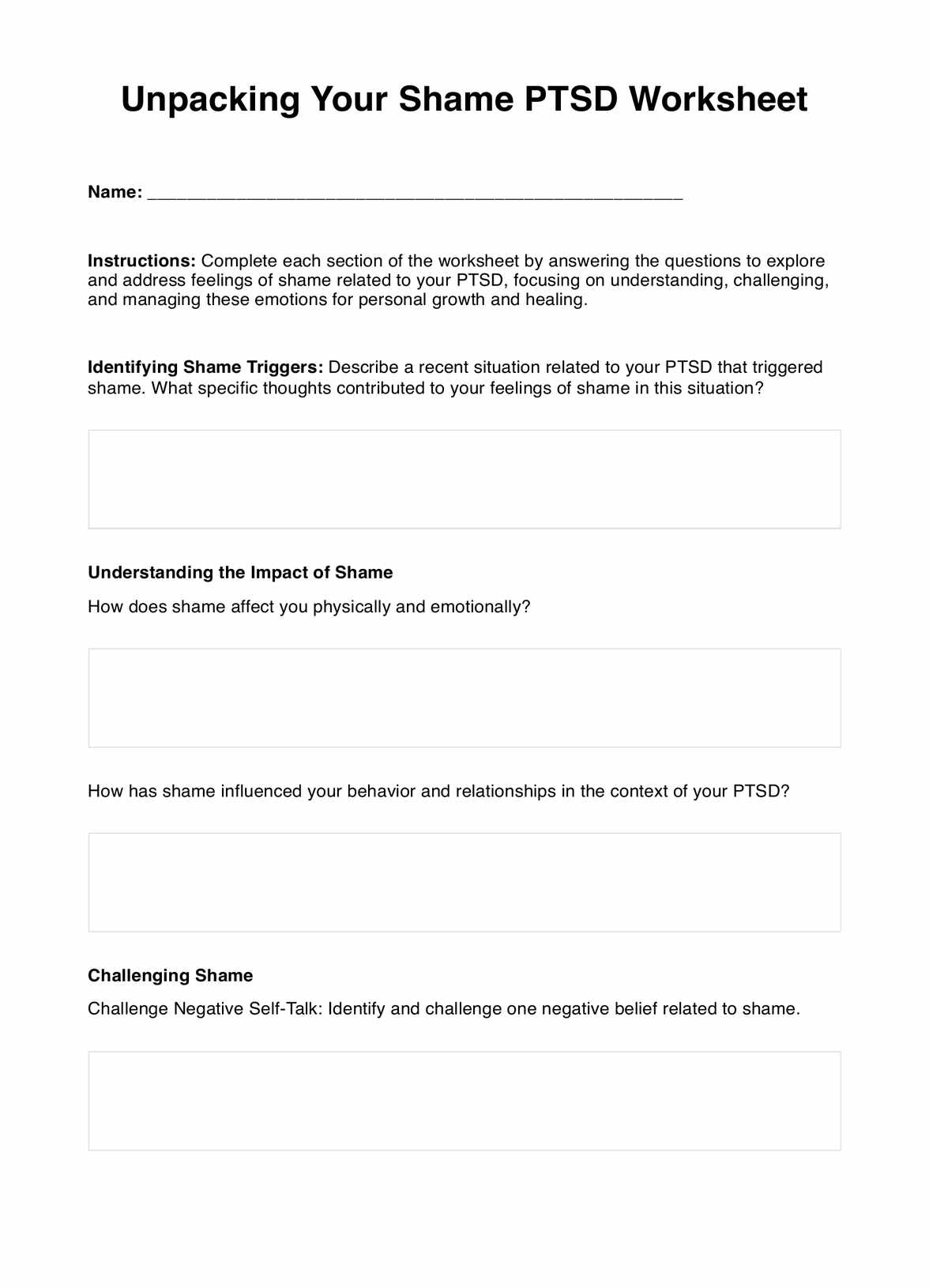The time it takes to complete the worksheet can vary from person to person, but on average, it may take around 30 minutes to an hour to work through the questions and reflections.

Unpacking Your Shame PTSD Worksheet
Address PTSD-related shame with the Unpacking Your Shame PTSD Worksheet. Confront and conquer shame to promote personal growth and healing.
Use Template
Unpacking Your Shame PTSD Worksheet Template
Commonly asked questions
It can be helpful for individuals by providing a structured framework to explore and address feelings of shame related to their PTSD, promoting self-awareness and emotional healing.
This worksheet is best used when someone is ready and willing to confront and process their feelings of shame related to PTSD. It is helpful during therapy sessions, self-help exercises, or as part of a regular personal reflection practice.
EHR and practice management software
Get started for free
*No credit card required
Free
$0/usd
Unlimited clients
Telehealth
1GB of storage
Client portal text
Automated billing and online payments











